Epic peaks, exhilarating roads, iconic views: these are just a few things when I think about driving in Pakistan!
Pakistan might be the most beautiful country on Earth, and exploring it with your own set of wheels is, in my opinion, the only way to do this country justice.
Venturing around Pakistan in your own car or motorbike gives you a sense of freedom that is simply unmatched, and it showcases some of the absolute best vistas and moments you’ll ever have.
Many of my best memories come from the thousands of kilometers I’ve driven all over this unforgettable land, and I’ve made this guide covering all the things you need to know: how to rent/buy cars and motorbikes, what you can expect to see, the problems that women might face as drivers, what the roads and Pakistani drivers are like, and tons more.
So read on, my friends, and learn everything you need to know about driving in Pakistan!
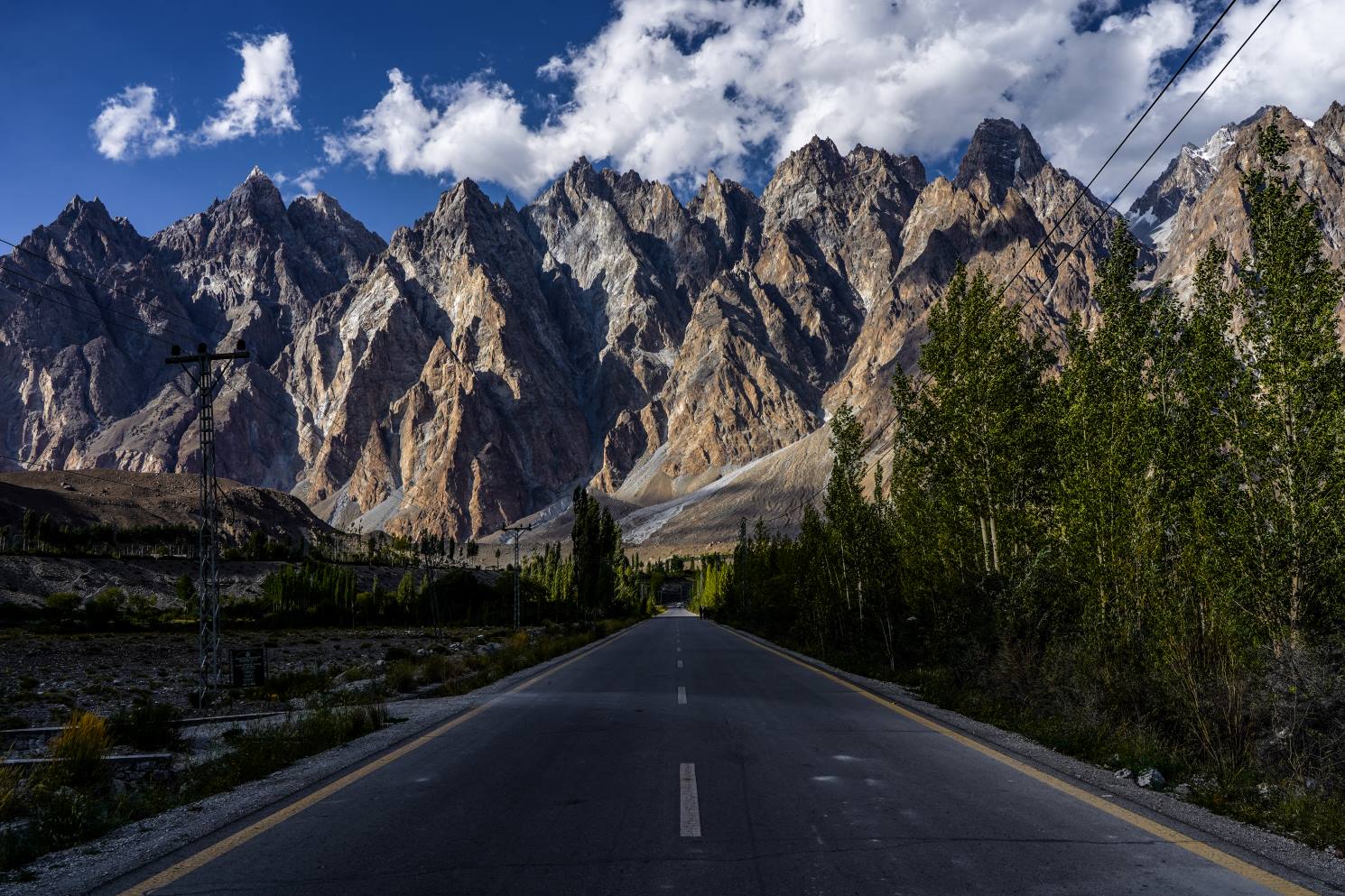
Photo: @nathanjordanphotography
The Broke Backpacker is supported by you. Clicking through our links may earn us a small affiliate commission, and that's what allows us to keep producing free content 🙂 Learn more.

Do You Want to Travel FOREVER??
Pop your email in below to get a FREE copy of ‘How to Travel the World on $10 a Day!’.
Why Drive in Pakistan?
As you can probably tell by now, I’m a huge fan of cruising around Pakistan with your own set of wheels. There are two main reasons for that!
First, I’ve gotta be honest: public transportation in Pakistan isn’t the greatest. It’s unreliable and uncomfortable a lot of the time, and if you decide to stick with this option, it seriously restricts your ability to move around freely. Expect crowded buses and vans, long, uncomfortable journeys, and potentially lengthy wait times.

Photo: @nathanjordanphotography
It’s still perfectly possible to find your way around using a combination of taxis, public transportation, and hitchhiking, especially in the cities! That being said, you’ll still face huge obstacles to getting to where you want to go and so I don’t suggest doing this if you’re trying to see as much as you can.
Second, and more importantly, having your own car or motorbike to explore Pakistan with just feels right.
There is nothing more glorious than having the complete freedom to travel where you want at will, and seeing the majesty of these landscapes at your leisure. For me, it’s simply not enough to catch a fleeting glance as I pass by in a crowded van.
I want to stop, get out, and soak it all in.
Having that freedom to go where I want, whenever I want is non-negotiable for me, and in Pakistan, that means having your own ride!
Driving in Pakistan with a Foreign License
Now for the obvious questions you might have: how do I drive in Pakistan with a foreign driver’s license? Do I need a driving license in Pakistan? Will the police make this a huge issue if I’m stopped?
And the short answer is: don’t worry about any of this.
While a driver’s license is officially required, in practice no one cares to check!

Photo: @nathanjordanphotography
Whether you’re at one of the many military checkpoints you’ll encounter along the way, or meeting soldiers randomly along your journey, no one will ever bother to look at your license. I have driven countless hours and kilometers across Pakistan, stopped at tons of checkpoints, and not once has anyone made the effort to look at my license.
There are many things you’ll need to pay attention to, but this isn’t one of them.
That being said, though, when you’re passing through checkpoints, you’ll need to have printed copies of your visa and passport at the ready, so make sure you’ve got plenty of those on hand!
Driving Rules in Pakistan
Talking about the rules of driving in Pakistan is a bit of an oxymoron because…well, there aren’t any. Driving here is often hectic and while there are technically rules like most other places, in practice no one follows them and instead opt for a driving style that takes some getting used to.
Adventure travel at it’s finest
You don’t have to worry about being pulled over by the cops for things like speeding, a busted tail light, or not having a license.
That being said, the absence of a proper rulebook doesn’t mean there aren’t some rules of the road you should observe.

It’s good to know that in Pakistan, it’s normal to drive on the left which may take some getting used to if you’re like me and from a country where we drive on the right!
Remember not to drive too fast, whether you’re in a car or on a motorcycle. Dangerous road or not, there’s no denying that speeding up comes with a lot more risk, especially on those mountain roads.
I get the temptation to floor it, but it’s important to take it easy and enjoy those views in peace!
Most importantly, though, is that you need to understand the driving style of most Pakistanis. Drivers here operate with a single mindset: Pass at all costs. No matter how irrational or dangerous it may be, no matter whether they’re about to go around a blind corner on a mountain road, no matter who is driving from the opposite direction, they WILL try to pass you.
That can lead to some scary moments and I suggest just pulling over to the side, slowing down, and allowing them to pass whenever you can.
Driving as a Woman in Pakistan
While it isn’t a common sight for women to be seen driving themselves around, there’s nothing illegal about it! It’s totally fine as a woman to rent or buy your own transportation.
You’ll definitely get some weird looks as you drive by, but there’s otherwise no need to practice anything more than usual caution. Pakistan is a socially conservative country, but women who want to drive themselves have nothing extra to worry about.
Road Conditions in Pakistan
So, what are the roads in Pakistan like? This one’s a bit complicated to answer because it ranges from magnificent, silky tarmac to nightmarish, back-breaking hellscape!
At its best, driving in Pakistan is a dream come to life: nowhere else in the world can you glide across smooth tarmac while being surrounded by some of the tallest mountains on the planet.
At its worst, well, let’s face it: you’ll be dealing with miserably chaotic traffic conditions, inevitably being covered in dust, on roads so bumpy that your back will feel less like a spine and more like a loose collection of pebbles once you’re finished.
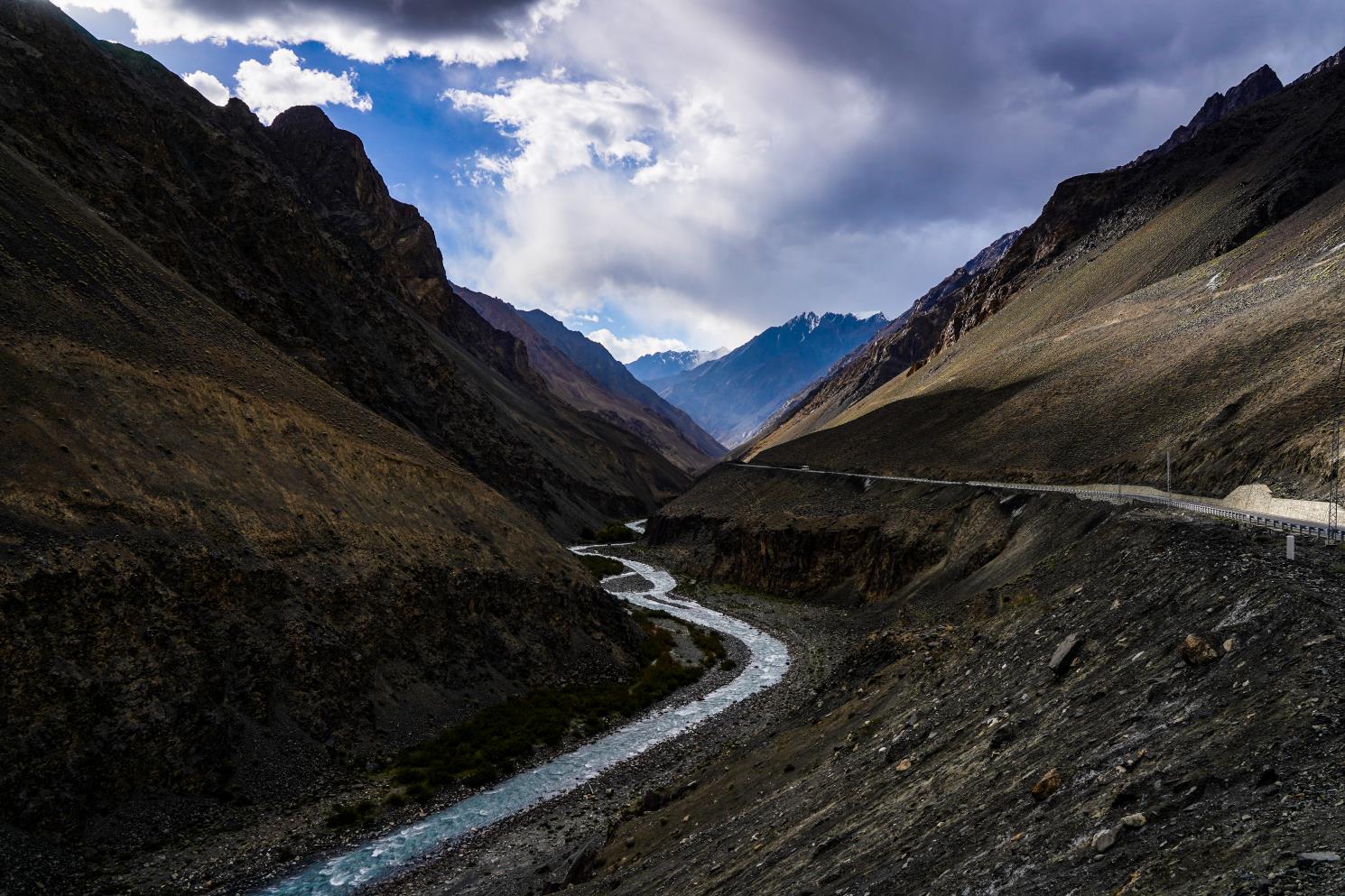
Photo: @nathanjordanphotography
In the cities, the roads themselves will often be in excellent shape with no potholes and no surprises to worry about.
The modern capital Islamabad has smooth, wide-open roads that are new, well-maintained, and easy to drive on. But if you’re driving through more crowded cities like Lahore or Rawalpindi, expect chaos, dust, a bumpy ride, and noise. Lots of noise.
Once you leave the cities, road quality gets less consistent and the rural areas tend to not have paved roads just yet. The Karakoram Highway is now paved for a significant portion of its length, but the stretch between Besham and Dasu is in absolutely hellish shape which thankfully can be avoided when Babusar Pass is open from approximately May-October.

Photo: @nathanjordanphotography
If you want to venture beyond the comfortable confines of the highways, you’ll need to be prepared to do some off-roading!
And this, amigos, is where the fun reaches the next level.
Getting off the beaten path in Pakistan can be a challenge, but it leads to some of the most thrilling experiences you can possibly have. The roads here and the vistas that surround them are unforgettable, epic, and like nowhere else. You’ll see jagged peaks, impossibly blue rivers and lakes, remote villages untouched by time, and so much more.
And, as is often the case, the more dangerous the journey, the bigger the reward!
Dangerous Roads in Pakistan
Awe-inspiring.
Adventurous.
Dangerous.

Photo: @nathanjordanphotography
Pakistan’s roads truly are some of the world’s greatest. The country’s north is home to tracks that are both terrifying and spectacular, and a massive feeling of accomplishment comes with conquering these roads (and a massive backache)!
I’m not exaggerating when I say that you’ll find what might be the world’s most dangerous roads here, and they take no small amount of endurance, preparation, and skill to master.
These roads are made of pure adrenaline.
And I’ll be honest, that is both a good thing and bad thing: the experiences are unforgettable, but you’ve got to have tons of commitment and focus to stay safe! Even paved highways like the Karakoram Highway are rife with danger.
Rocks can fall from above at any time, landslides can occur suddenly, and there’s always the possibility that some psychotic driver will come screaming around a blind corner at wildly unsafe speeds.
It’s for those reasons that when driving, you always need to keep glancing uphill to check for falling rocks, and take extra care on those corners.
Off-road tracks present a new set of dangers as well, but they are also the places where the beauty of Pakistan is truly at its finest. The rewards you find in this epic wilderness are exactly why it’s worth venturing beyond the easygoing boundaries of paved roads!
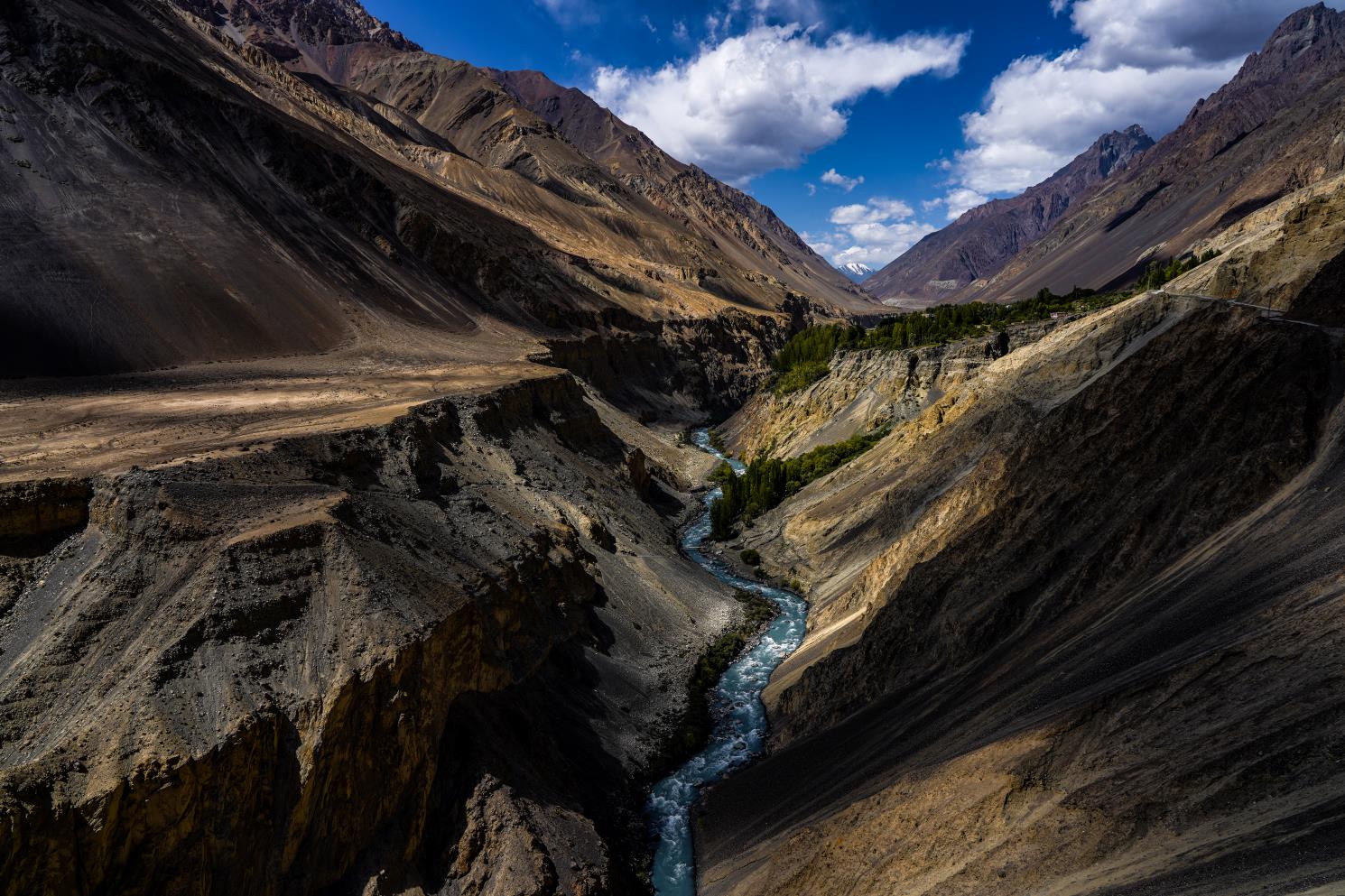
Photo: @nathanjordanphotography
The number of wild, awe-inspiring roads in Pakistan is countless and way more than I have space for in this guide, but a few of them stand out above the others as truly legendary.
Chapursan Valley Road
Riding my motorcycle through the historic Chapursan Valley is one of my favorite memories. Rich in ancient myth and legend, and having served as a resting place for travelers dating back centuries to the days of the Silk Road, this valley boasts hospitable people and scenery that is out of this world.
And the road is pure magic. It is undoubtedly one of the most beautiful places in Pakistan.
It may be bumpy as hell and legit unbearable in at least one short stretch, but this journey towards the Wakhan Corridor is iconic. Sheer drops into the river, dodgy bridges that look like they’re on the verge of collapse, and wide, sweeping views of the Pamir Mountains define this road.

Photo: @nathanjordanphotography
The best time to take on Chapursan is in June or September, when you’ll manage to miss both winter conditions and what passes for a “huge” crowd of tourists in a place like this. I’ve been in late October when winter is setting in and Autumn is at its most glorious, and while that is spectacular, it also presents a ton of new challenges on the road you don’t have to deal with in warmer weather.
Shimshal Valley Road
The Shimshal Valley Road is arguably Pakistan’s greatest, and is known for electrifying, adrenaline-fueled insanity!
Terrifyingly dangerous at any time of year, I took on Shimshal at the onset of winter. Large ice patches on the road, frigid cold, and howling, icy winds complimented the year-round dangers of falling rocks, massive drops, and the thin, fine sand that is so easy to spin out of control on.
If I’m being honest, that sand is by far what you have to worry about the most, even more so than the sheer drops. You’ll have to deal with it often, and it can easily throw a car (and especially a motorcycle) off balance and into a potentially dangerous situation.

Photo: @nathanjordanphotography
That is a problem on pretty much every off-road track, but it’s even more dicey here due to how risky this road already is.
Shimshal takes no prisoners. You’ve got to be careful, alert, and ready so you can enjoy this epic road!
These two roads are but a fraction of the adventurous roads Pakistan has on offer: the paths winding through Yasin, Ghizer, Yarkhun, and countless more await.
But to do any of this, you’ve got to be prepared.
Preparing for Dangerous Trips
Vaunted tracks like the Chapursan and Shimshal Valley roads can get insanely dangerous at points and if you’re not careful, you could find yourself in a scary situation that’s hard to get out of. Doing basic things to prepare beforehand will help you be ready for all the craziness Pakistan can throw at you!
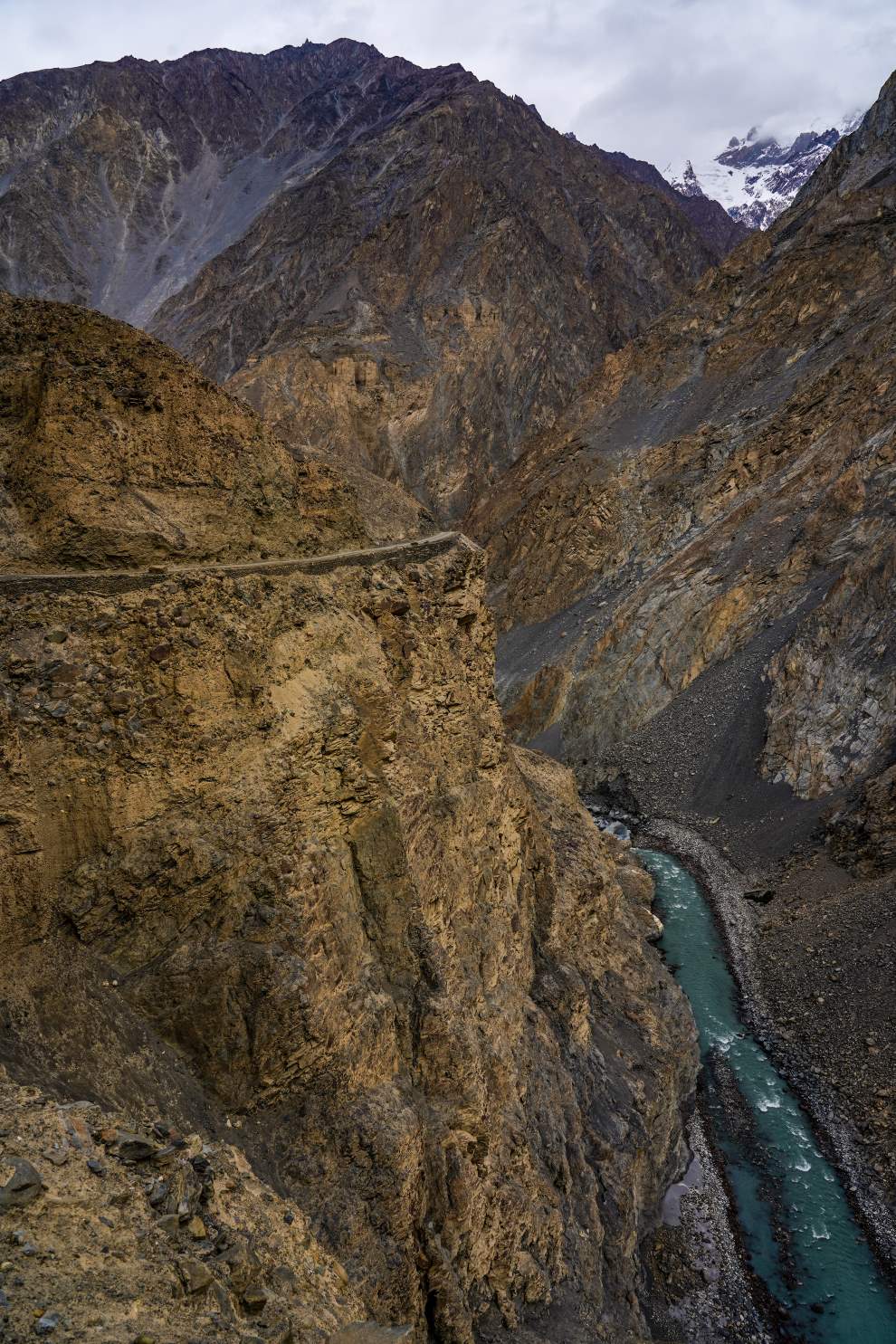
Photo: @nathanjordanphotography
First, you should never travel alone on roads like this. You’re in remote territory, so if you’re alone and something catastrophic happens, you will be on your own.
No matter how experienced you are, it’s always good to have friends there who know how to help.
Second, before setting out you should make sure your wheels are in top shape. Check the engine, oil levels, tires, etc. to make sure your ride is good to go, and have equipment like a tire puncture kit on hand in case of a flat.
Third, get as much information about the road you’re about to travel on beforehand. A day before I was set to take on the Shimshal road for the first time, I asked a friend about road conditions and was told that a portion of the road had collapsed, making it impassable.
It would have been a real shame to ride all the way out there just to find a massive hole in the ground where the road should have been!
Finally, roads like this aren’t for beginners! If you’re not experienced in off-roading, it’s best to get some easier conquests under your belt first because these roads can absolutely wreck you.
The Right Kind of Cars and Motorcycles to Get
Now that you know what to expect, let’s look at what kind of ride you’ll need to have to take on Pakistan’s roads! While these insane tracks are the main reason to travel to Pakistan, you need to approach them responsibly.
First, let’s glance at a popular car in Pakistan and what NOT to get your hands on: The Suzuki Mehran.
I bring this up because it’s a very common car in the country and as I said, exactly what you shouldn’t be using if you have the choice.
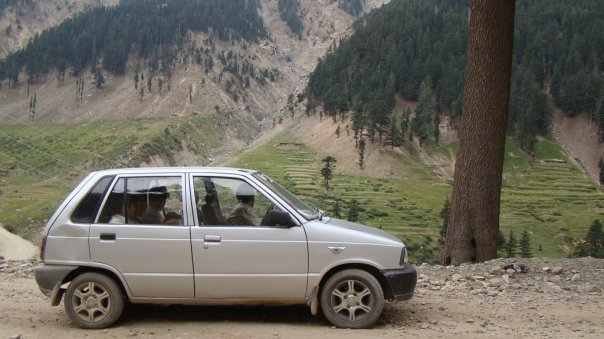
Photo: @nathanjordanphotography
While it’s totally fine to be driving this troll doll on wheels around in the cities as it is literally everywhere, you’ll need to have something that’s up to the challenge if you want to go off-road, which is where the deepest and best treasures of Pakistan are hiding.
I’ve seen a shockingly high number of people attempt to drive Pakistan’s wildly dangerous northern roads in cars that clearly weren’t made for them. A Toyota Corolla or Honda Civic just isn’t gonna cut it in the wilds of the Karakoram, and yet people try to make it happen all the same.
If you plan on heading on any offroad tracks at all and someone attempts to sell or rent you any cars like this, don’t take the bait.
A car with four-wheel drive is an absolute must to take on the challenge of driving through Pakistan. That said, it’s totally possible to get a car that’s made only for paved roads, take it north, and then leave it behind at your guesthouse while you hire a jeep to take you off-roading!
The biggest plus of any car is the huge amounts of extra space you get as opposed to a bike.

Photo: @nathanjordanphotography
If you opt for a motorcycle, I highly recommend going with the Honda 125cc or the Suzuki 150cc. Both are dependable, light, reliable, and commonly used throughout Pakistan, which means that spare parts and the expertise needed to repair any damage are never too far away or too expensive.
Getting a 250cc bike or bigger is definitely an option as well, but these bikes are heavy and they can sink into the dirt pretty easily when off-roading. Having to get your bike out of deep, thick mud or dirt is not a situation you want to find yourself in.
It can also be hard to find the spare parts you need, and most people don’t know how to work on these bigger bikes because Pakistanis just don’t use them.
They’re too expensive and consume too much fuel for locals, so you won’t see many of these driving around.
This is why you should stick with a 125cc or a 150cc. These bikes will give you the balanced machine you need to traverse this wild country!

Photo: @nathanjordanphotography
You’ll find the price of the Honda 70cc VERY appealing, but you’re going to need more power for taking on those unpaved roads, and for carrying any extra weight you might have on the back.
While riding through Khunjerab National Park, I met these two guys from Karachi who rode the entire length of Pakistan from Karachi to Khunjerab Pass on a single Honda 70.
Absolute madlads.
That’s one of the more insane feats I’ve seen someone attempt on a motorbike and to this day I am still astounded that they pulled it off, but it’s not something the rest of us should try.
Whether you’re getting a car or a motorcycle, your goal should be to find a balanced machine that does everything pretty well. Don’t focus too much on one thing at the expense of the other and you’ll end up getting a ride that you’ll make some epic memories with!
Renting and Buying Cars and Motorcycles
Thankfully, it’s pretty damn easy to find the vehicle of your choice while traveling in Pakistan. People are buying and selling every day, and there are enough resources lying around to help you out whether you’re looking to rent or buy.
If you’re torn between renting or buying, the most important thing to consider is how long you’ll be in Pakistan for.
Staying for two months or longer means you’ll definitely want to look at buying, and shorter visits make renting the much better option.
On my first trip in Pakistan, I was there for about a month and opted for renting from the awesome guys at Karakoram Bikers based in Gilgit City. They have always been reliable and will provide you with a sturdy machine to explore Pakistan’s rugged north on.

Photo: @nathanjordanphotography
But it’s just cheaper in the long run to buy if you end up staying at least for a few months. Renting for that long could get pricy and you’ll never get the money back, and buying means you can always resell for some money back.
So where do you go to get your hands on a slice of freedom?
A few different good options exist. Pakwheels.com is a digital hub of buying and selling used cars and motorbikes, and a great resource for getting a handle on how much you can expect to pay for a solid ride.
Pakistan Bikers is a reliable place to either rent or buy a decent motorcycle in Islamabad, and most of the time will be a more convenient option.
The owner, Haris, also owns a hostel in Islamabad and is always available to help you out if you’re looking to get a bike as well!
This is where it’s important to say that the journey from Islamabad to the north can be brutal and not for everyone: suffocating traffic, dust, scorching and freezing temperatures, and a lengthy trip are all inevitable, not to mention the risk of landslides.
That may make you want to think about waiting till you get to Gilgit to get your own wheels, and instead hiring a taxi or taking the bus north.

Photo: @nathanjordanphotography
Regardless of where you choose to buy, you need to remember this one rule: don’t buy directly, you should instead pay a Pakistani friend and have them buy it for you.
The reason for this is that as a foreigner, it’s much more difficult to buy a vehicle. There’s a ton of extra paperwork and hurdles to deal with, so it’s just easier to use the loophole of having a Pakistani friend get it for you.
Prices for Renting and Buying
One of the best things about motorbikes in Pakistan is that you can get a decent bike for very cheap! Even a Honda 125 could go for as little as $300 or even less, while a 150cc could cost you as much as $600.
Regardless of where you’re renting from, rental prices are going to be around $10-20 USD per day, but the quality of the bike you’re getting can vary drastically!

Photo: @nathanjordanphotography
Cars – especially the good ones – sadly do tend to be more expensive. Even getting your hands on a used Suzuki Mehran (the shitbox I lovingly mentioned earlier) can cost as much as $2000 USD!
A Toyota Prado – exactly the type of car with the 4×4 capabilities you’ll need in the wild – will cost you around 1,700,000 PKR, or $6000 USD at least. And buying in Islamabad could be two or three times more expensive. If you opt to drive yourself, keep in mind that you’re responsible for everything that happens to your rental.
It’s also quite a challenge to rent a car as a tourist, and you should expect to pay at least 6000 PKR per day.
The rising cost of fuel is another thing to consider: at the time of writing (November 2023), prices currently sit at roughly 281 PKR per liter, a stark increase from just a year ago, and continue to change rapidly.

Photo: @nathanjordanphotography
Hiring a jeep with a driver for the day will cost around 7000-8000 PKR, but one undeniable plus of this is that you’ll have an experienced pro taking you across those insane roads! No matter where you are, it will never be too difficult to find a jeep for a day trip. Plus, this price is still a lot cheaper than a full-fledged Pakistan tour.
Residents of northern areas like Gilgit Baltistan, Chitral, and Swat are eligible to buy vehicles that have Non-Custom Plates (NCP) which are tax-free! So if you opt to buy in the north, you can save some money to use for more exploring.
That being said, a car or motorbike with an NCP will not be permitted to travel to more southern provinces, so keep that in mind.
Getting Insured BEFORE Hitting Pakistan’s Roads
You’re going to want some solid travel insurance while driving in Pakistan.
ALWAYS sort out your backpacker insurance before your trip. There’s plenty to choose from in that department, but a good place to start is Safety Wing.
They offer month-to-month payments, no lock-in contracts, and require absolutely no itineraries: that’s the exact kind of insurance long-term travellers and digital nomads need.
SafetyWing is cheap, easy, and admin-free: just sign up lickety-split so you can get back to it!
Click the button below to learn more about SafetyWing’s setup or read our insider review for the full tasty scoop.
Final Thoughts on Driving in Pakistan
There is no doubt in my mind that driving in Pakistan is among one of the best experiences you can ever have.
Whether by car or by motorbike, exploring Pakistan’s endless frontiers is something you’ve got to do at least once in your life.
This country truly is THAT captivating, with all its highs and lows.
Drivers can be maniacs, roads can be bumpy, but the highs are simply so surreal that nothing else will matter. Journeying around Pakistan in your own ride is genuinely euphoric.
An adventure like nothing else awaits, and it’s only a plane ticket (or border crossing) away!

Photo: @nathanjordanphotography
Buy Us a Coffee!
A couple of you lovely readers suggested we set up a tip jar for direct support as an alternative to booking through our links. So we created one!
You can now buy The Broke Backpacker a coffee. If you like and use our content to plan your trips, it’s a much appreciated way to show appreciation 🙂








